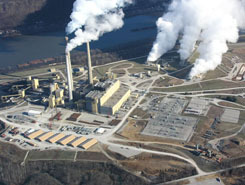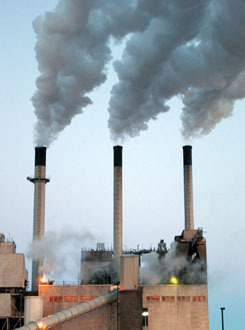Cap and Trade is one of the most oft repeated phrases in the news today and yet few people understand the program.
President Obama touted the benefits of cap and trade throughout his campaign. Now that he is president he expects to sign a cap and trade bill within a year. This new program will have an enormous impact in the energy industry in the United States.
What is Cap and Trade?
Cap and Trade is an environmental program championed by President Obama. The goal of the program is reducing pollution.
Basically the Environmental Protection Agency (EPA) sets an overall limit on the emissions that are allowed (the CAP). Then it creates ‘allowances' to emit pollution until the cap is reached. The allowances are then doled out to the businesses emitting pollution in the industry being regulated. The businesses can then buy and sell their allowances to one another (the TRADE).
The idea obviously being that if a business is going to pollute it will need to have enough allowances to do so. If they don't have enough allowances to accommodate their emissions they will be forced to buy more from other businesses with surplus or they will be forced to reduce their own emissions. The flip side is that if a company finds a way to lower its emissions it can make favorable deals trading, selling, or banking its surplus allowances.
The government design is that the cap and trade program will put the industry (not the EPA) in charge of choosing where reductions are to be made and how best to comply with the law. The EPA will set the cap but will not micromanage how industry will adhere to the cap; it will simply monitor compliance. The industry has almost complete flexibility on how it will achieve compliance.
The EPA will:
- Handle Allowance distribution - providing the initial allowances (based on political decisions)
- Allow Allowance trading between companies.
- Impose stringent, automatic penalties to penalize noncompliance
- Evaluate the program and determine additional required actions
Will this Work?
Well, it has worked on a small level. The EPA has cap and trade programs already functioning.

The Acid Rain Program (ARP) which covers sulfur dioxide emissions from electric plants has been running since 1995. The EPA slowly ratchets down the cap and forces continued decrease in sulfur dioxide emissions.
The Nitrogen Oxide Budget Trading program is another current EPA cap and trade setup. Since 2000 the EPA has monitored emissions from fossil fuel electric generation. By 2007 emissions measured over 60% lower than in 2000.
Several other examples exist including the Clean Air Interstate Rule (CAIR) and the Clean Air Visibility Rule (CAVR).
Why the Debate?
There is little argument that cap and trade programs will reduce emissions. It has been proven to work on the small scale. The argument rages about the cost of the program.
Cap and trade opponents argue that the increased cost to the energy companies, to retrofit their production to comply with cap and trade rules, will be passed to the end consumer. Therefore, utility bills for families will become onerously expensive - as much as $3100 extra per year per family, according to opponents.
President Obama does not disagree that the cost to consumers will increase but he argues that the program itself will generate hundreds of billions of dollars over the next decade and that the government can use that money to help families to offset the increased cost.
The opponents counter that congress will be under no obligation to spend the money to relieve families of their increased bills and there are no details on how a family might qualify for such aid if it were available.
President Obama disputes the $3100 per year figure and says the real cost will be more in the order of $40 or $50 per year per family. President Obama reiterates that the reduction in emissions is essential to our planet and worth the monetary sacrifice.
 Print
Print Email
Email








